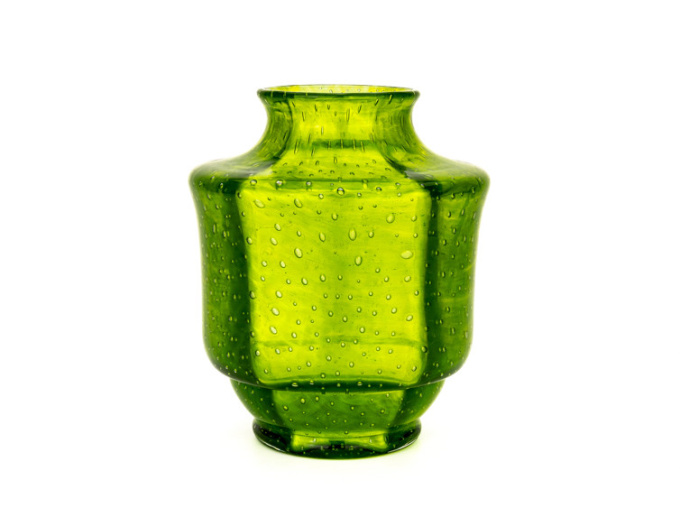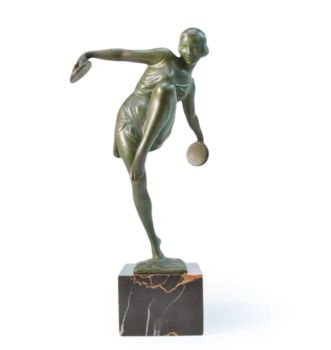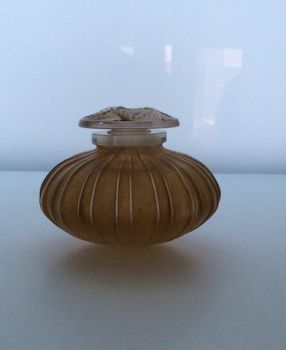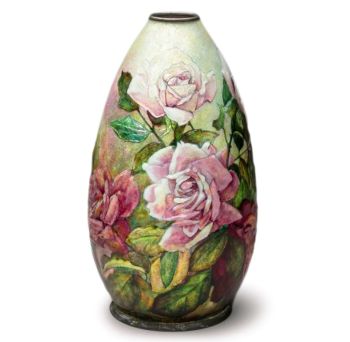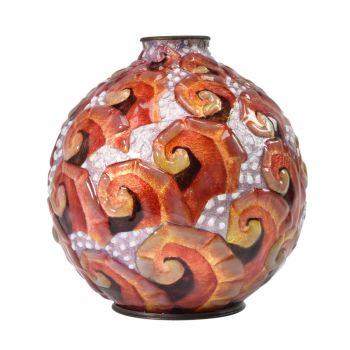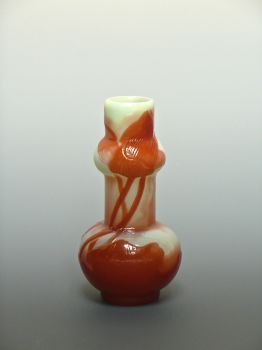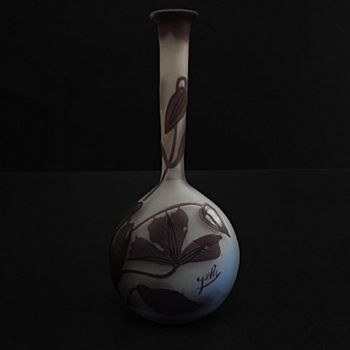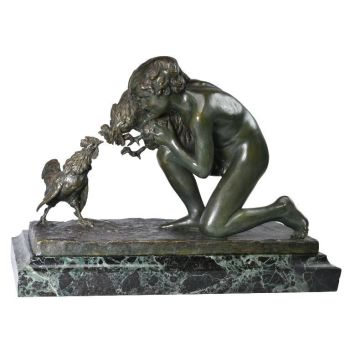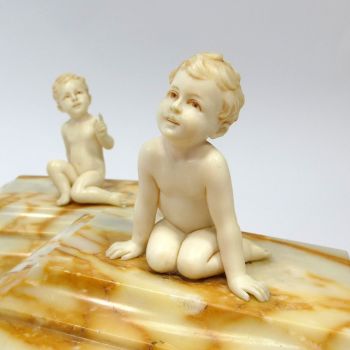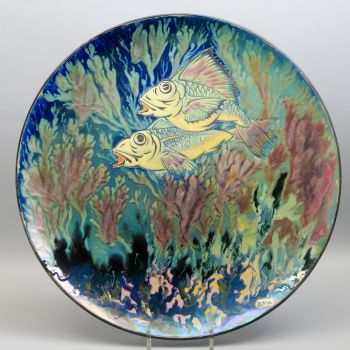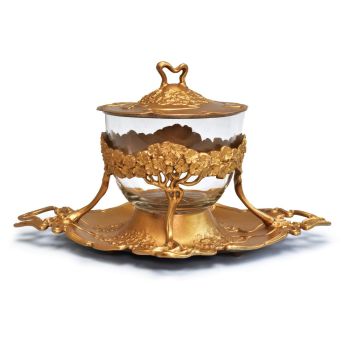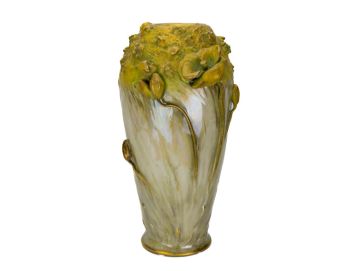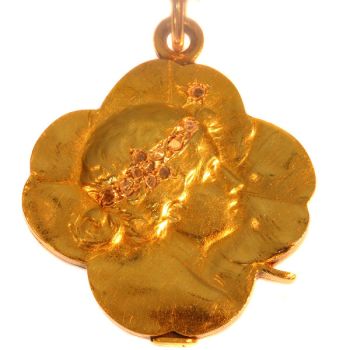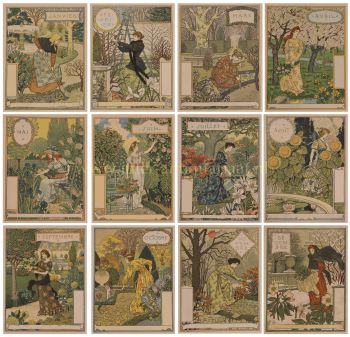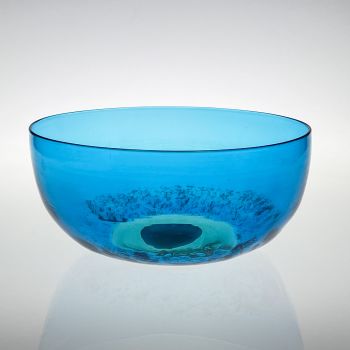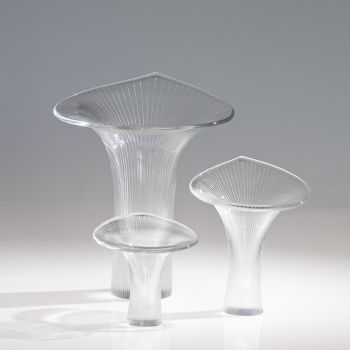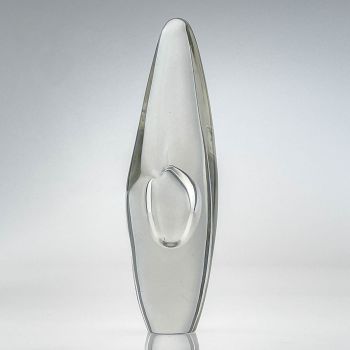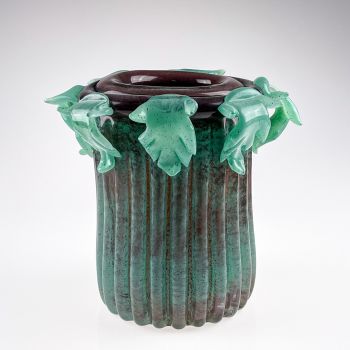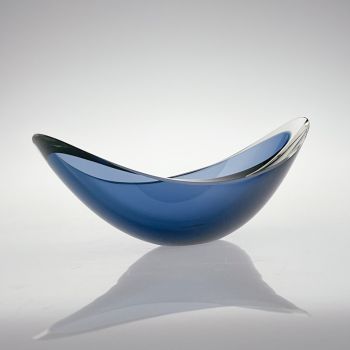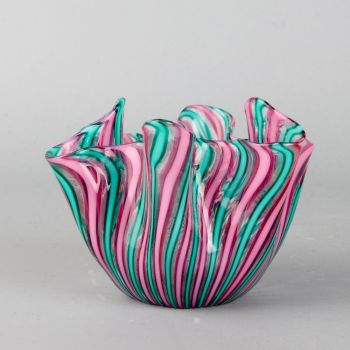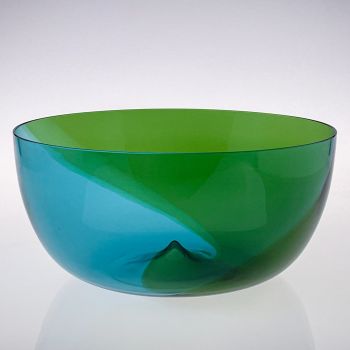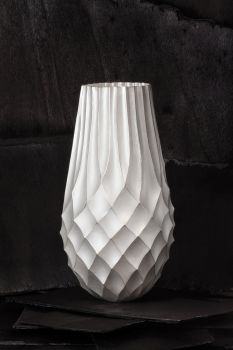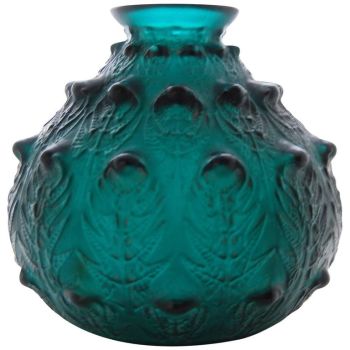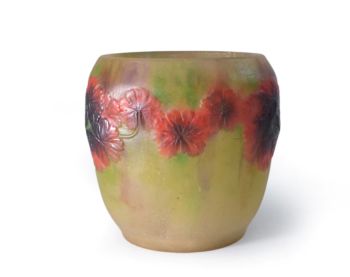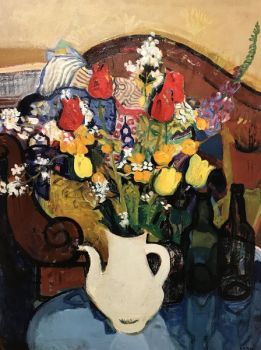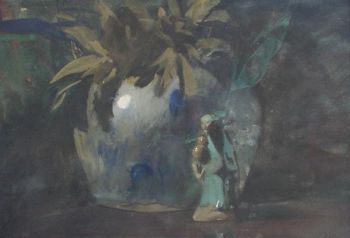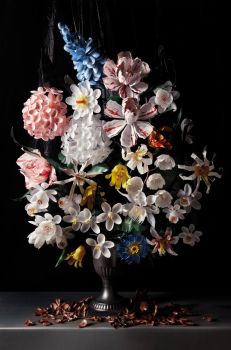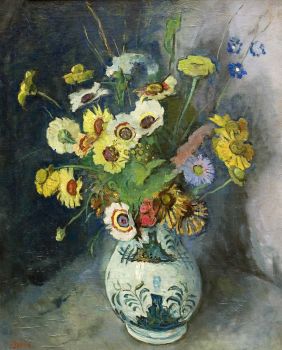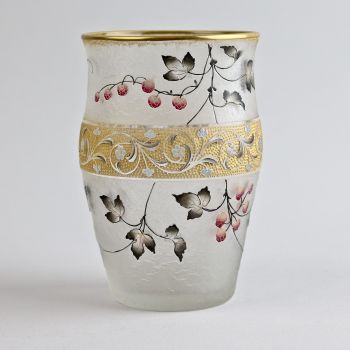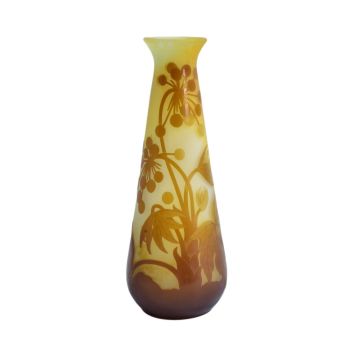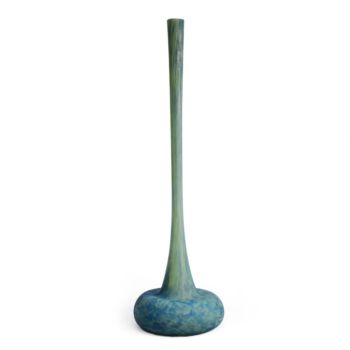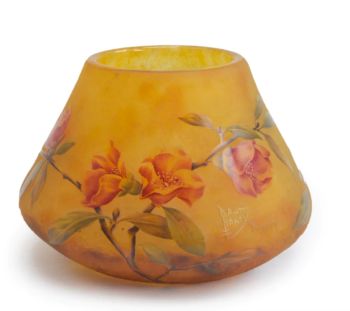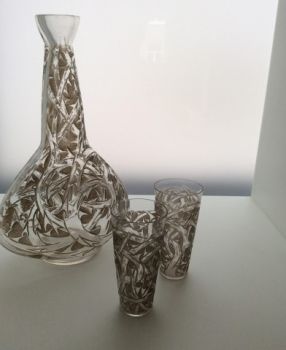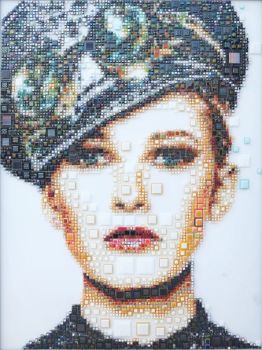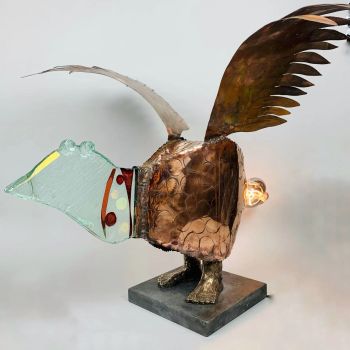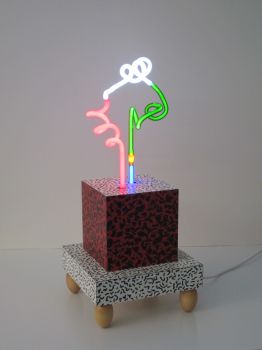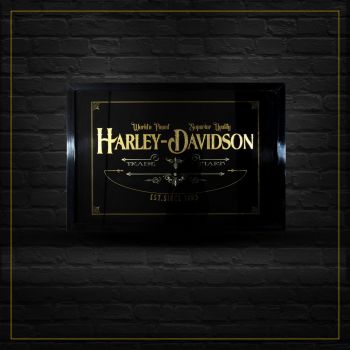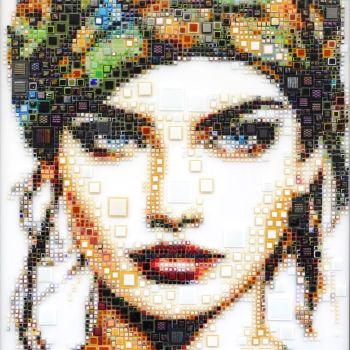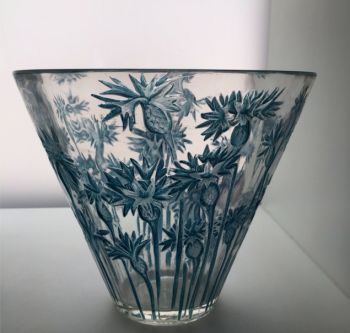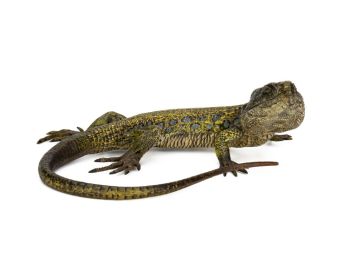Johann Loetz Witwe – Ausführung 140 – “Controlled air bubbles” in ground color Green 1900 - 1909
Johann Loetz (Lötz) Witwe Klostermühle
Vidrio
14 cm, ø 12 cm
ConditionExcellent
Precio a consultar
Antiques Emporium
- Sobre la obra de arteThis masterpiece by Johann Loetz Witwe executed in Ausführung 140 is a true testament to the artistry and innovation of the Jugendstil era.
Adorned in a captivating ground color of verdant green, this vase exudes a sense of natural splendor that is both captivating and evocative. However, its true beauty lies in the intricate layers of glasswork that adorn its surface, each telling a story of craftsmanship and creativity.
At its core, the vase boasts an inner layer of titania glass threads, delicately woven to create a mesmerizing interplay of light and texture. These threads dance within the glass, casting enchanting shadows and lending an ethereal quality to the piece. Surrounding them is a layer of controlled air bubbles, suspended in a delicate dance that adds depth and intrigue to the vase’s design.
Finally, the outer layer of green glass encases this symphony of elements, providing a glossy finish that enhances the vase’s luminous presence. With each glance, new details emerge, inviting admiration and appreciation for the skill and artistry required to create such a masterpiece.
It’s important to note that while the accompanying pictures offer a glimpse into the vase’s beauty, they cannot fully capture the breathtaking colors and textures of the glass. The subtle nuances and iridescence of the glass can only be fully appreciated in person, adding to the allure and mystique of this remarkable piece.
Dimensions:
Height: 145mm / 5.71”
Diameter top: 65mm / 2.56”
Diameter body: 120mm / 4.72″
Literature:
Prestel – Böhmisch Glas 1880 – 1940 Band 1 Werkmonographie – Page 269. - Sobre el artista
La cristalería Loetz existió en Klostermuhle, Austria, durante poco más de cien años, a partir de 1840. Pero su apogeo fue durante la vida de Max Ritter Von Spaun, nieto del Johann Loetz original que había fundado la empresa.
Von Spaun se hizo cargo de la empresa en 1879 y la dirigió hasta 1908, un año antes de su muerte. Fue asistido por Eduard Prochaska, su especialista técnico, y juntos inventaron, diseñaron y produjeron toda una serie de maravillosos nuevos tipos de vidrio, obteniendo varias patentes y ganando premios en todas las principales exposiciones mundiales durante la década de 1890 y los primeros años de el nuevo siglo.
La empresa Loetz se encontraba entre los líderes en diseño Art Nouveau y especialmente en vidrio artístico iridiscente. El vidrio "Papillon", como el jarrón de la izquierda, a veces se conoce hoy como vidrio "mancha de aceite". Otro colorante favorito de Loetz fue el vidrio irridizado con senderos tirados llamado vidrio "Fenómeno".
Había jarrones irridizados con cintas de colores metálicos que serpenteaban sobre la superficie, y muchos diseños espectaculares con estelas aplicadas de hermosos colores, o simplemente sacadas del cuerpo del vidrio para formar asas o decoración.
Alrededor de 1900, la compañía comenzó a colaborar con diseñadores externos, y algunos grandes artistas diseñaron piezas para Lotz, en particular Joseph Hofmann, Koloman Moser, Maria Kirchner y Hofstatter.
En 1908 Loetz fue adquirido por el hijo de Max Von Spaun, también llamado Max, y aunque luchó financieramente (pasando por la quiebra en 1911 y nuevamente en 1931) hubo varios grandes diseñadores cuyo trabajo fue producido por Loetz durante esos años y a través del arte. período de deco. Estos incluyeron a Adolf Beckert y Michael Powolny.
¿Está interesado en comprar esta obra de arte?
Artwork details
Related artworks
Johann Loetz (Lötz) Witwe Klostermühle
Johann Loetz Witwe - Phänomen Genre 7773 – Orange1900 - 1910
Precio a consultarAntiques Emporium
Johann Loetz (Lötz) Witwe Klostermühle
Johann Loetz Witwe – Jugendstil Cobalt Papillon vaas1900 - 1910
Precio a consultarAntiques Emporium
1 - 4 / 7- 1 - 4 / 24
Frères Daum
Daum Nancy – “Paysage Soleil Couchant” vase with two applied handles1900 - 1910
Precio a consultarAntiques Emporium
Amalric Walter
Amalric Walter & Henri Bergé – Crabe plumier1920 - 1929
Precio a consultarAntiques Emporium
Gabriel Argy-Rousseau
Gabriël Argy-Rousseau – Crabes et Algues vase – 19201920 - 1929
Precio a consultarAntiques Emporium
1 - 4 / 24René Lalique
Un florero "Fougeres" de color verde oscuro muy raro diseñado por R. Lalique1912
€ 8.950Lennart Booij Fine Art and Rare Items
 curada por
curada porSilla Scheepens
Jan Voerman sr
Still Life with flowers in a Chinese figurine1850 - 1900
Precio a consultarKunsthandel Pygmalion
1 - 4 / 24Artista Desconocido
Cáliz veneciano alado1650 - 1700
Precio a consultarPeter Korf de Gidts - Antiquairs
Artista Desconocido
Una rara filigrana una copa de retortoli1550 - 1600
Precio a consultarPeter Korf de Gidts - Antiquairs
Artista Desconocido
Un cáliz de monedas inglés-holandés1738
Precio a consultarPeter Korf de Gidts - Antiquairs
René Lalique
Un jarrón temprano 'Bluets' diseñado por Rene Lalique (1860-1945)1910 - 1920
Precio a consultarLennart Booij Fine Art and Rare Items
1 - 4 / 24Johann Loetz (Lötz) Witwe Klostermühle
Johann Loetz Witwe – Jugendstil Cobalt Papillon vaas1900 - 1910
Precio a consultarAntiques Emporium
Johann Loetz (Lötz) Witwe Klostermühle
Johann Loetz Witwe - Phänomen Genre 7773 – Orange1900 - 1910
Precio a consultarAntiques Emporium
Frères Daum
Daum Nancy – “Paysage Soleil Couchant” vase with two applied handles1900 - 1910
Precio a consultarAntiques Emporium
Amalric Walter
Amalric Walter & Henri Bergé – Crabe plumier1920 - 1929
Precio a consultarAntiques Emporium
Franz (NamGreb) Bergmann
Franz Bergman – Viennese cold-painted bronze lizard with a mechanical mouth1900 - 1909
Precio a consultarAntiques Emporium
1 - 4 / 12

